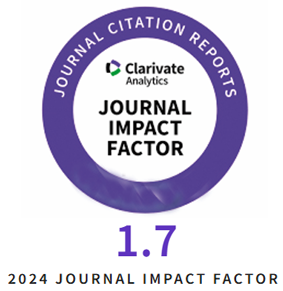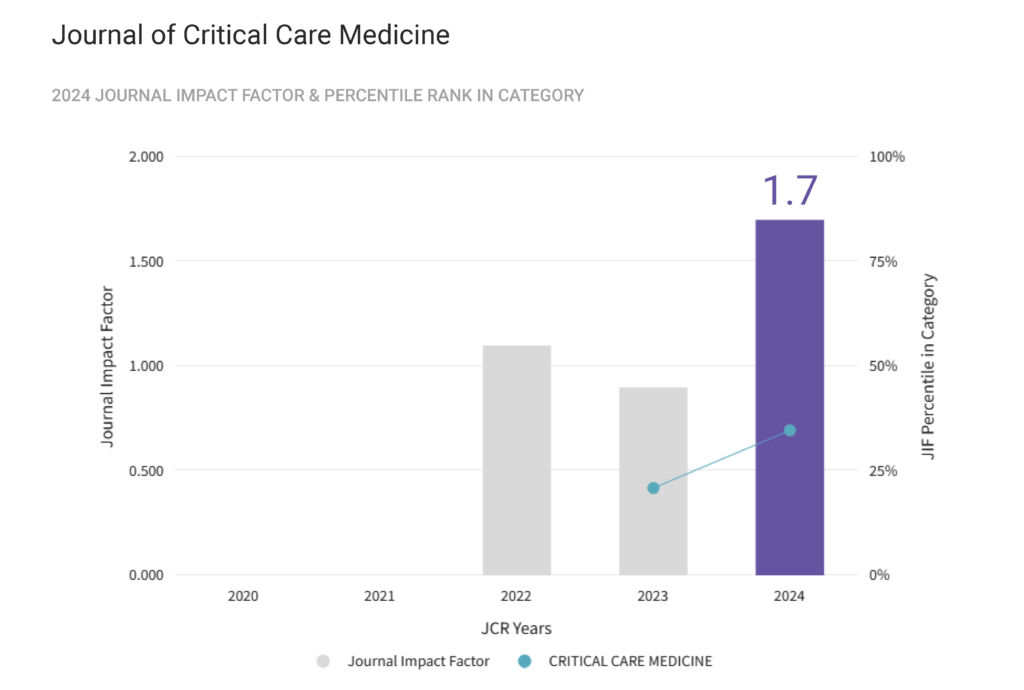Introduction: Advances in surgical techniques have significantly improved the prognosis of patients with operated congenital heart malformations. However, late complications pose a challenge to therapeutic management. Although the Rastelli procedure has brought substantial benefits in the surgical correction of transposition of the great arteries in pediatric patients, it carries the burden of numerous complications into adulthood.
Case presentation: We present the case of a 35-year-old man diagnosed at birth with D-transposition of the great arteries, atrial septal defect, ventricular septal defect and severe pulmonary stenosis. His medical history revealed two previous operations: a Blalock-Taussing shunt at the age of 4 months and a Rastelli procedure at the age of 3 years. The patient presented to the emergency room with fever and congestive heart failure symptoms. Subsequent investigations revealed two late complications of the Rastelli procedure: stenosis of the homograft connecting the pulmonary artery to the right ventricle and infective endocarditis.
Conclusions: Although the clinical context may lead to the assumption that this is a case of congestive heart failure due to homograft stenosis, we must not overlook the possibility of overlapping infective endocarditis, which may also contribute to the development of heart failure.
Author Archives: administrare
Real-world clinical decision of andexanet alfa administration for intracranial hemorrhage during anticoagulant therapy using factor Xa inhibitor
Introduction: Andexanet alfa shows excellent hemostatic efficacy in treating intracranial hemorrhage (ICH) during Xa inhibitor therapy. However, its optimal use remains uncertain.
Aim of the study: This study aims to evaluate our clinical experience in managing Xa inhibitor-related ICH to clarify its appropriate application.
Material and methods: This study was conducted as an observational, non-interventional study. We observed 63 cases of ICH in patients receiving anticoagulation therapy with apixaban, rivaroxaban, or edoxaban. After excluding 14 patients due to fatal outcomes or complete hemostasis, 49 patients were eligible for andexanet alfa administration.
Results: The mean age and hematoma volume was 78 years and the 35ml, respectively. Based on patient characteristics and severity, andexanet alfa was administered to 23 patients, while 26 patients received usual care. Hemorrhage enlargement was absent in 22 cases (92.8%) in the andexanet group and in 22 cases (84.6%) in the usual care group. Hemorrhage expansion occurred in three cases from the usual care group, one patient undergoing emergency surgery and another died from uncontrollable intraoperative bleeding. Two patients (8.7%) in the andexanet group experienced thromboembolic events as adverse reactions. At 3 months, the modified Rankin Scale (mRS) was 3 or lower in 39% of the andexanet group and 50% of the standard care group.
Conclusions: Although patient selection bias make it difficult to draw definitive conclusions, we recommend considering andexanet alfa administration for cases within several hours of the last Xa inhibitor dose to prevent neurological deterioration. Emergency surgical cases should also be eligible for andexanet alfa to ensure intraoperative safety. Further research is required to determine clinically appropriate indications for its use.
Veno-venous ECMO for rapidly progressing interstitial lung disease: A multidisciplinary approach
Introduction: This is a unique case of fulminant respiratory failure secondary to a rare cause of rapidly progressing ILD; antisynthetase syndrome (ASS). Failure to deliver timely multi-modal treatment in these cases can lead to increased morbidity and mortality.
Case presentation: A previously healthy 27-year-old male presented to his local hospital with a 1-week history of malaise, shortness of breath and cough. Initial work up including bloods and imaging were suggestive of community acquired multi lobar pneumonia, for which he received treatment as per local guidelines. Unfortunately, despite broad empirical antimicrobial cover, he continued to deteriorate with worsening type-1 respiratory failure requiring intubation and subsequent institution of prone position ventilation. Extensive microbiological investigations yielded no positive results. On day 7 of admission immunological testing revealed an ENA screen positive for Jo-1 antibody and a diagnosis of ASS was made. Despite treatment with immunosuppression the patient’s condition rapidly deteriorated and the decision to support with V-V ECMO was made following MDT consideration as there remained uncertainty as to the extent of reversibility of the underlying condition.
Conclusions: This patient recovered with combination of conventional immunosuppression, therapeutic plasma exchange and ECMO support. This case highlights Antisynthetase syndrome as a cause of reversible interstitial lung disease in the ICU and the importance of multi-disciplinary decision making and aggressive treatment approach in the management of such conditions.
Evidence-based fluid resuscitation of the septic HFpEF patient: A narrative review of the literature
Purpose: This narrative review aims to highlight the available evidence on fluid resuscitation in septic patients with heart failure, with a particular focus on heart failure with preserved ejection fraction.
Methods: A PubMed search was conducted using the keywords “sepsis” (or sepsis, or septic shock), “heart failure” (or HF, or HFrEF, or HFpEF or congestive heart failure), and “fluid” (or resuscitation, or fluid resuscitation, or fluid management). The results were summarized in narrative review format.
Results/Conclusions: The presence of HFpEF in septic patients appears to be associated with an increased risk of adverse outcomes. This population may benefit from a more individualized approach to fluid resuscitation. Emerging tools for assessing fluid responsiveness and characterizing septic cardiovascular physiology show promise, but further investigation is needed.
Transition from ICU to home care with long-term invasive ventilation using a single-limb BiPAP circuit
Background: Patients with chronic respiratory failure caused by severe neuromuscular impairment often require long-term respiratory support. Invasive mechanical ventilation (IMV) via tracheostomy is usually provided in intensive care units (ICUs), but in carefully selected cases, it can be safely transitioned to home care. The use of a single-limb ventilator circuit (Single BiPAP circuit with Whisper Swivel II), intended initially for non-invasive ventilation (NIV), may represent a cost-effective and practical alternative for long-term home IMV.
Case presentation: We present a 50-year-old male with progressive neuromuscular disease and chronic respiratory failure, who required long-term IMV through a tracheostomy tube. After stabilization in the ICU, ventilation was maintained at home using a Single BiPAP circuit with Whisper Swivel II, combined with a mechanical insufflation-exsufflation (MIE) device for airway secretion clearance. The patient’s family received structured training in tracheostomy care, ventilator operation, and secretion management. Over 32-month period, the patient maintained stable respiratory function, experienced a marked reduction in infectious exacerbations, and preserved an acceptable quality of life.
Conclusion: In selected patients, long-term home IMV using a single-limb ventilator combined with an MIE device can be a safe, effective, and cost-efficient alternative to conventional ICU-based ventilation. Successful outcomes require structured patient and caregiver training, close follow-up, and coordinated multidisciplinary support.
Interruption of enteral tube feeding during chest physiotherapy in critically ill adults: A scoping review
Introduction: Numerous reports indicate that the nutritional targets of critically ill patients are frequently not met. In daily clinical practice, it is often recommended to temporarily stop enteral tube feeding in patients on mechanical ventilation (MV) who are undergoing chest physiotherapy. This is because adverse events can occur and potentially cause vomiting and increase the risk of aspiration pneumonia.
Aim of the study: To identify, characterise, and analyse the available evidence on the interruption of enteral tube feeding in critically ill adult patients receiving MV before or during chest physiotherapy.
Materials and Methods: We conducted a scoping review following the recommendations of the Joanna Briggs Institute. We conducted a systematic search of MEDLINE (Ovid), Embase (Ovid), CENTRAL (Cochrane Library), CINAHL (EBSCOhost), and other search resources until March 2025. We included studies of any design that addressed the application of chest physiotherapy in adults on MV and receiving enteral tube nutrition. Study selection and data extraction were performed in duplicate, and disagreements were resolved by consensus.
Results: We include four studies that were published between 2018 and 2024. One observational study reported that enteral tube feeding was discontinued due to the application of chest physiotherapy in patients in prone and supine MV. In the other three studies, which contribute to a clinical practice guideline, discontinuation of enteral tube feeding is recommended 30 minutes before using the head-down position as a bronchial drainage manoeuvre. However, no studies report on the safety of chest physiotherapy when enteral tube feeding is either discontinued or continued.
Conclusion: There is no empirical evidence to justify routinely stopping enteral tube feeding during chest physiotherapy in MV patients. Future primary studies should report on the management of enteral tube feeding before or during chest physiotherapy interventions, as well as document any adverse events that may occur during its application.
Efficacy of inhaled antibiotics in children with ventilator-associated pneumonia: A systematic review and meta-analysis
Introduction: The nebulization of antibiotics allows the delivery of high concentration of medication to the lungs without the systemic side-effects.
Aims: We performed a systematic review and meta-analysis to determine the efficacy and safety of inhaled antibiotics in children with ventilator-associated pneumonia (VAP).
Data sources: We searched Web of Science, SCOPUS, MEDLINE Complete, CINAHL and ClinicalTrials.gov trials registry until June 2025. This study was registered (CRD42024504982).
Study selection: We included studies published in the last ten years that recruited children under 18 years old with VAP and treated with inhaled antibiotics. We excluded studies of children with tracheostomy and bronchiectasis.
Data extraction: Type of intervention (inhaled ± intravenous (IV) antibiotics), clinical improvement, duration of mechanical ventilation (MV) and hospitalization, bacterial eradication, and adverse events were recorded.
Results: Seven articles (346 patients) reported the use of inhaled antibiotics in VAP, of which four were randomized controlled trials. These studies included premature infants, neonates and children. The commonest inhaled antibiotic used was colistin (six studies). Meta-analysis revealed that inhaled antibiotics + IV antibiotics versus IV antibiotics +/- inhaled normal saline(placebo) resulted in no significant reduction in duration of MV (MD 0.88 days, 95% CI -2.72, 4.49; p=0.63, I2 = 85%) and ICU stay (MD 0.34[-2.79,3.40]; p=0.83, I2 = 80%). Clinical success (RR 0.68, 95% CI 0.39, 1.21; p=0.19, I2 =24%), microbiological eradication (RR 1.93, 95%CI 0.97,3.78; p=0.06, I2 = 2%) and mortality (RR 0.91, 95% CI 0.67, 1.24; p=0.54, I2 =0%) were also not significantly different. Inhaled antibiotics were not associated with increased nephrotoxicity (RR 0.91, 95% CI 0.18, 4.61; p=0.91, I2 = 30%)
Conclusion: More robust studies are required to confirm the clinical efficacy of inhaled antibiotics in the treatment of VAP. Nonetheless, adjunctive inhaled antibiotics may be safe in children, although close monitoring is still required.
Pharmacokinetic-guided magnesium prophylaxis in cardiac surgery: A randomized trial demonstrating guideline-level reductions in atrial fibrillation, accelerated recovery, and systemic cost savings
Objective: To evaluate the efficacy, safety, and cost-effectiveness of a perioperative magnesium (Mg) sulfate protocol in reducing postoperative atrial fibrillation (AF) incidence and ICU resource strain following cardiac surgery.
Methods: Design: Double-blind, single-center randomized controlled trial (RCT). Setting: Tertiary-care academic hospital. Participants: 130 adults undergoing elective cardiac surgery, randomized to Mg sulfate (n=65) or placebo (n=65). Interventions: The Mg group received a pharmacokinetic-guided regimen: 2 g intravenous bolus post-cardiopulmonary bypass, followed by 1 g/h infusion for 5 hours, then 200 mg/h for 19 hours, and oral supplementation (I g every 8 hours) for one week post-discharge. The placebo group received equivalent saline infusions and oral placebo.
Results: Primary outcome: AF incidence was 18.5% in the Mg group vs. 41.5% in placebo (unadjusted RR=0.45, 95% CI: 0.25–0.81; p=0.007). Secondary outcomes: Mg shortened ICU stay by 1.4 days (p<0.001), reduced mechanical ventilation duration by 3.2 hours (p<0.001), and demonstrated comparable safety profiles for hypotension and renal impairment. Subgroup analysis: CABG patients showed 65% risk reduction (OR=0.35, p=0.01). Cost-effectiveness: ICU stay reduction projected $3,500 savings per patient.
Conclusions: Perioperative Mg sulfate significantly reduces AF incidence, accelerates recovery, and lowers healthcare costs, supporting its integration into standardized postoperative protocols. This trial provides Level I evidence for Mg as a guideline-recommended intervention. These findings are promising and support the integration of Mg into standardized postoperative protocols; however, they require confirmation in larger, multicenter studies.










